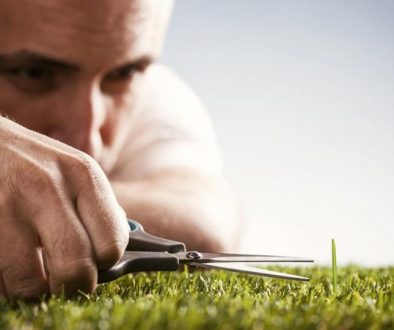Cultivating Mindfulness
What is mindfulness ?
According to the “father” of mindfulness Dr. Jon Kabat-Zinn :
“Mindfulness means paying attention in a particular way, on purpose, to the present moment, and non-judgmentally”.
Rent
“Cultivating Mindfulness”
Choose you favorite level on the links below
RENT your favorite level of VeroYoga class “theme inspired” – YOGA, MEDITATIONS, MANTRAS, BANDHAS PRANAYAMAS AND MORE!
EACH EPISODE IS A UNIQUE DIFFERENT CLASS
ANY LEVEL-ANY DAY-ANY TIME
Why there has been such buzzword among athletes, corporations, and wellness professionals alike, all claiming its amazing benefits?
Because mindfulness is one of the most transformational tools for personal and spiritual development. And even though it could be complex, it is simple, in that it is a way of training yourself to simply focus on whatever is happening at the present moment and accepting it without judgement.
Moreover, the practice of mindfulness has been examined scientifically and has been found to be a key element in stress reduction, and overall well-being. Clinical studies have demonstrated that practicing mindfulness meditation can bring improvements in both physical and psychological symptoms as well as positive changes in health, attitudes and behaviors.
Nowadays, the practice of mindfulness meditation has been included into mainstream medicine.
There are 3 main foundations of mindfulness:
- Mindfulness of Body : In this foundation we train ourselves to observe the body part by part, rather than observing body as a whole, all at once. In this way we develop the awareness that the body is actually a collection of many parts: skin, muscles, bones, limbs, organs, and all other parts.
This reminder makes mindfulness much more accessible. When we look at the body as composed of many parts, it also helps us to have the awareness to see the body as a body and not as “my body”, or identify it as “myself”. This foundation helps us to recognize that the body is impermanent, and is constantly changing. Therefore, the body is not a source of lasting happiness. Mindfulness of the body teaches us to “know the body as it really is”. - Mindfulness of Feelings: In this foundation we train ourselves to observe feelings as they come up, whether they be pleasant, unpleasant, or neutral. We learn not to judge them, nor to identify ourselves with them. As we fully acknowledge our feelings we can notice how they eventually always dissipate. Seeing feelings as a sensation or emotion, rather than “my feeling” , we come to “know feelings as they really are”.
- Mindfulness of Mind: This foundation refers to our consciousness and awareness. When we purposefully pay close attention to the way each thought arises and then passes away, we gain the understanding that we are not our thoughts. We learn not to attach our identity to our thoughts and we come to know “mind as it really is”.When we practice mindfulness meditation we are creating space for ourselves, space to think, space to breath, and more important, space between ourselves and our reactions. Therefore, the main goal of mindfulness meditation is not to quiet the mind, but to pay attention.
How to cultivate mindfulness?
Mindfulness can be cultivated through mindfulness meditation, a systematic method of focusing your attention on the present moment. There are many ways to practice mindfulness, and all mindfulness techniques are a form of meditation. The goal of any mindfulness technique is to achieve a state of alert, focused relaxation by deliberately paying attention to thoughts and sensations without judgment.
Rent
“Cultivating Mindfulness”
Choose you favorite level on the links below
RENT your favorite level of VeroYoga class “theme inspired” – YOGA, MEDITATIONS, MANTRAS, BANDHAS PRANAYAMAS AND MORE!
EACH EPISODE IS A UNIQUE DIFFERENT CLASS
ANY LEVEL-ANY DAY-ANY TIME
Basic Mindfulness Meditation Technique:
Sit quietly and focus on the flow of your natural breath, allow thoughts to come and go without judgment.
Notice subtle body sensations, such as tingling or itching and without judgment, let them go. Notice sounds, smells, sights and without judgment, let them go. Notice emotions, such as joy, anger, fear, and without judgment, let them go. Notice the urges of cravings or reactive behaviors, notice how your body feels as the craving enters, and instead of wishing for the craving to go away, affirm with certainty the knowledge that it will subside.
When your mind starts wandering, daydreaming, or criticizing, just gently redirect your focus to the flow of your natural breath. Above all, accept whatever arises in your awareness at each given moment. Practice acceptance and stay with it.
Pay attention to your emotions, body sensations, and the parade of thoughts that inevitably arise. The great challenge here is not to judge them as good or bad, nor to get caught in thinking about the past or future. Just watch what comes and goes in your mind and discover which mental habits produce a feeling of well-being or suffering.
Invest in yourself. The effects of mindfulness meditation tend to be dose related, the more you do, the more effect it usually has. Start with a few minutes a day, and increase as you become more comfortable. And even if at times this process may not seem relaxing, trust that over time, with continuous practice, it will provide a key to greater self-awareness and well- being.





